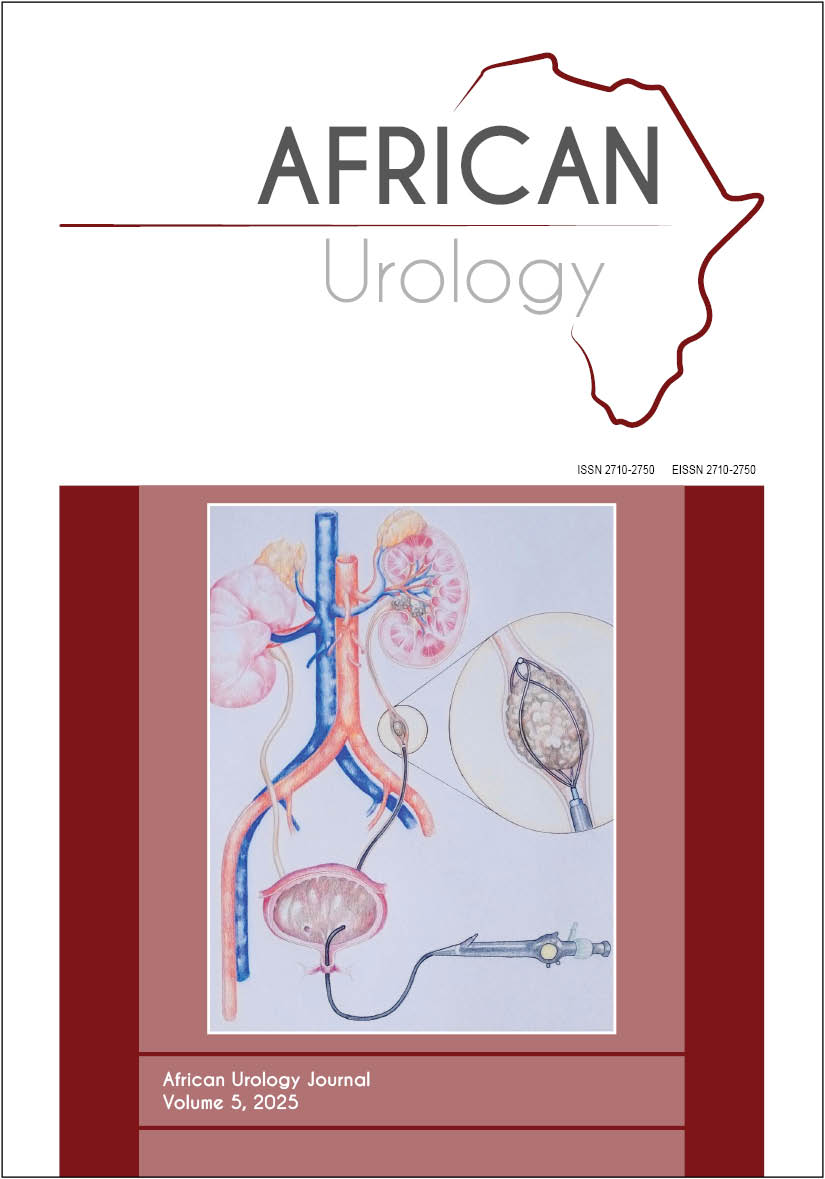Spectrum, antibiotic susceptibility pattern, and predisposing factors for urinary tract infections among patients with bladder outlet obstruction due to benign prostatic hyperplasia at a tertiary hospital in northern Tanzania
Main Article Content
Abstract
Introduction: Urinary tract infections (UTI) are one of the most common infectious conditions encountered by clinicians globally. However, in ageing men, it is uncommon until after 50 years due to bladder outlet obstruction (BOO) caused by benign prostatic hyperplasia (BPH). This study aimed to evaluate the bacterial spectrum, antibiotic susceptibility pattern, and predisposing factors for UTIs in patients with BOO due to BPH at a tertiary hospital in Tanzania.
Materials and methods: This was a hospital-based, analytical, cross-sectional study conducted at a Tanzanian northern zone tertiary hospital from January 2021 to December 2023, including 464 patients whose urine culture results were analysed using structured data and the Statistical Package for the Social Sciences (SPSS) version 25.
Results: Of the 464 patients, the majority were aged 61–80 years, with a mean age of 72.8 ± 9.10. About 44.8% had comorbid conditions. Bacterial isolates were found in 214 patients (44.1%), and 31.5% had indwelling urinary catheters. Escherichia coli (29.9%) was the most prevalent organism. The isolated bacteria showed a high sensitivity to meropenem (90%), amikacin (81%), piperacillin/tazobactam (71%), and nitrofurantoin (79%), but high resistance to amoxicillin/clavulanic acid (71%), ceftriaxone (78%), and ciprofloxacin (76%). Catheter use was the only independent predictor for UTIs (p = 0.05).
Conclusion: UTIs in men with prostate enlargement are worsened by the rising antibacterial resistance (ABR), with catheterisation being the main predicting factor. Recommendations include limiting the empirical use of fluoroquinolones, encouraging nitrofurantoin use, and improving catheter care.
Article Details

This work is licensed under a Creative Commons Attribution-NonCommercial 4.0 International License.
